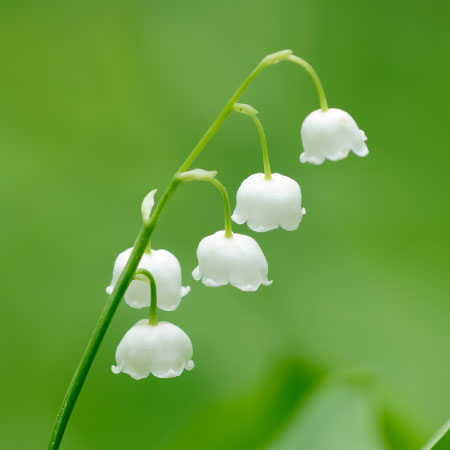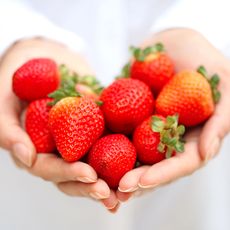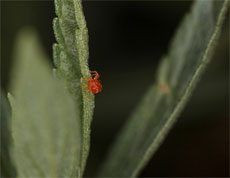Q&A with Kelly Norris, Author of 'Plants With Style'

Kelly D. Norris is a 20-something, award-winning author and plantsman from Iowa and the first director of horticulture at the Greater Des Moines Botanical Garden, a newly revitalized 14-acre public garden in Des Moines, Iowa.  He has garnered acclaim for his high-energy, zealous presentations on the national stage, leading many to call him one of the rising stars of American horticulture.  Kelly's career began at age 15 when he talked his parents into buying a nursery (Rainbow Iris Farm), and since then he's become one of the few gurus on marketing horticulture to emerging demographics. At the Botanical Garden, Kelly directs and manages a team of horticultural professionals in all aspects of design, curation, programming, and garden management, after serving as the principal horticulture consultant to the $18 million renovation project completed in 2014.  He is also the editorial director for the organization's award-winning member magazine Bloom and the artistic director of the popular Spring Garden Festival, a four-day pop-up retail plant sale and garden show. You can connect with Kelly on Facebook, Twitter, Instagram or LinkedIn! Kelly's latest release is "Plants With Style". This book calls for a garden revolution: out with the boring plants and in with the newcomers that will make your jaw drop and your pulse quicken! Read on for more information about this book and find out how to WIN ONE OF THREE COPIES from The Timber Press!
1. You feature a quote at the beginning of your book about homeowners battling nature instead of working with it. How does the content of your book help homeowners with this battle?
My book doesn't help people do battle at all--quite the opposite.  The Ken Druse quote draws a contrast between traditional forms of gardening that have for much of Western history wrought nature to human will instead of translating it and working with it.  The Environment chapter means to espouse the idea that gardening in harmony (not dissonance) with the environment is the way of the future.  To turn the question around, the book brings to the light the notion of starting with an environmentally resonant plant palette that allows gardeners to leverage their planting decisions for a more satisfying, less resource/labor intensive kind of gardening. 2. What are some of the great, but not so commonly thought of, plants that you bring to the attention of passionate gardeners in your book?  Well the book is full of them and there's a wide range of options for gardeners in a variety of zones. Take Anisacanthus quadrifidus (Texas firecracker bush). It's a spark plug perennial, lighting up the late season garden to the joy of migrating hummingbirds in zones 7-10. Plus it's native and water wise. On the colder side of the continent, think of something more traditional like a catmint, but step away from 'Walker's Low' (everyone plants that). Try this lovely French cultivar of Siberian catmint called 'Souvenir d'André Chaudron'. It's upright in habit and flowers throughout the summer if moisture is abundant. 3. Your book serves as a guide to a soul-satisfying garden. What exactly makes a garden soul-satisfying and how does your book help readers make it so? A great garden starts with great plants. These are the plants that matter, the plants that connect us to our environment and that ultimately cause us to have some emotional, romantic connection with the space we've planted. When we make gardens that mean this much to be people, that excite them, that solve challenges in their landscapes and that delight them, we create a soulful connection to the land that isn't just an amenity, but a necessity to our existence. 4. What is the best piece of advice you have to offer us when changing our garden from boring to brilliant? Don't be afraid to experiment and to collect. Gardens are expressions of their creators. They don't have to mean anything to anyone but you. Find your way with the plants you love. You also don't have to overhaul the whole thing at once"”start small, play with your ideas and expand on your successes. 5. What's in your garden?  Treasures, the kinds of plants I wish for gardeners to grow.  These are plants that bring me great joy either for what they are, where or who they came from. They are the plants that matter to me.  Many of the plants in the book are things I've grown and known.  That said, my garden has a wildness to it that's a true expression of my spirit.  It's eclectic and undownable.  From ever-expanding hoards of snowdrops in the backyard, to several forms of Clematis heracleifoliain late summer and my beloved Lespedeza thunbergii 'Samindare' and Aconitum columbianumin autumn, my current garden on the farm is an artful collection of plants that matter.  It's undoubtedly a precursor to another garden in my life.  I'm always planting a garden in my head, waiting for the right moment to give it life in whatever form that might be.
| WIN ONE OF THREE COPIES OF Plants With Style!To enter, simply leave a comment on this blog post by midnight on Thursday, July 21, 2016 (be sure to provide a valid e-mail address) in answer to the following question:What plants do you consider to be stylish?Be sure to include a valid e-mail address. The winner will be drawn at random from all qualified entrants, and notified via e-mail. (See Rules for more information.) |
UPDATE 8/22/16: Congratulations to Anita Lee, Patricia Skinner & [TBD]!
Gardening tips, videos, info and more delivered right to your inbox!
Sign up for the Gardening Know How newsletter today and receive a free copy of our e-book "How to Grow Delicious Tomatoes".

Shelley Pierce was a writer for Gardening Know How, contributing to hundreds of articles for the site.
-
 How To Grow Strawberries From A Strawberry: All You Need To Cultivate Yummy Fruits
How To Grow Strawberries From A Strawberry: All You Need To Cultivate Yummy FruitsYou may know how to grow strawberries from small plants or runners – but what about growing from the fruit? Here we show you how to grow strawberries from a strawberry
By Mary Ellen Ellis
-
 Best Tomatoes For Containers: 10 Tastiest Varieties For Plentiful Produce In Compact Areas
Best Tomatoes For Containers: 10 Tastiest Varieties For Plentiful Produce In Compact AreasThese are the best tomatoes for containers that prove you don't need to have a large space or elaborate garden to grow delicious produce.
By Bonnie L. Grant
